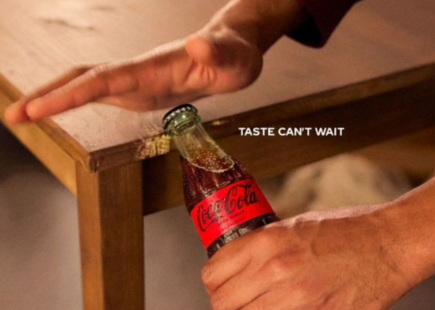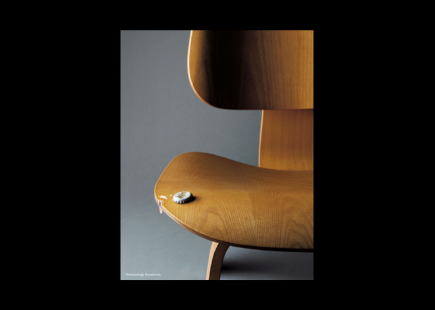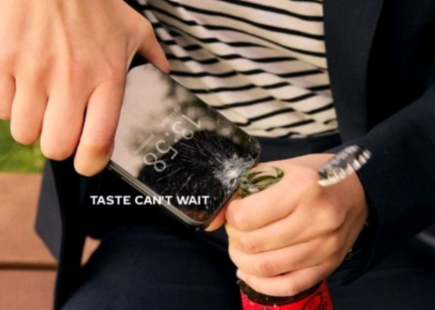When does creative inspiration become imitation?

Some creative work seems suspiciously familiar, and it’s a conversation we need to have, says Dominic Radcliffe, creative director at Here Be Dragons.
Recently, there’s been a lot of dialogue about creative work and the difficulty that arises when something goes beyond being familiar and into territory where the work is indefensibly similar to the original.
A few examples have been striking - namely, the example of the big ‘Taste Can’t Wait’ Coca-Cola ad, which was met by predictably slavering praise. Some have suggested that the campaign bore a decent resemblance to a Cannes Award-winning ‘Reassuringly Expensive’ campaign from Stella Artois from 1999.
It highlights that commercially-based creativity finds itself in a bit of a tricky spot. We’re already looking at the existential and increasingly real threat of AI taking our jobs; our lack of originality certainly won’t help make the case for our continued survival.
There are a few things which I think should be considered when we’re faced with online outrage at work looking suspiciously familiar to our own.
 Credit: Coca Cola campaign
Credit: Coca Cola campaign Credit: Stella Artois campaign
Credit: Stella Artois campaign Credit: Coca Cola campaign
Credit: Coca Cola campaignA numbers game
Firstly, there are more of us than ever before. PR creatives weren’t so high on the agenda until fairly recently. Now, there are tonnes of us out there, all belonging to ‘culture first’ agencies who have their finger ’on the pulse’ - but we’ve all read the same trend reports, we’ve all scoured the same articles, there is only a limited amount of culture out there for us to get our claws into - and that means there are bound to be some similar types of work coming out. (I am not exempt from this).
Secondly, clients' appetites are not really going to be that different. We’re operating on the same timelines and - in some instances - on strikingly similar products with CMOs and other marketing heads who’ve all read the same handbook on where the guard rails are for good creative and ‘alienating’ creative work. Their audiences are similar.
To compound matters, we’re all now subject to a LinkedIn algorithm that favours comments, and we’re also living in the era of the LinkedIn influencer. So, the creative work we produce now has a different value than it did previously as it will often be used by some freelance strategist who is looking for ‘meaningful’ content to help boost his 15,000 follower count and ensure his March doesn’t look as thin on the ground as his February did.
Exposure and inspiration
This means that the work is more publicly circulated, and there is no stone left unturned regarding comments, both positive and otherwise. As creatives, we’ve never been more exposed to each other’s stuff which feels both free-ing in terms of ‘getting inspired’ but also if you get caught copying someone’s homework or (heaven forbid) another creative might not actually like your work - there is nowhere to hide. And that can be very daunting to, say, a junior creative who is just trying to make their first foray into the world of creative stuff.
It does beg the question: How are we - as creatives - with a limited pool of inspiration/culture to draw from, similar audience-types, product-types and clients who have similar objectives when there’s an absolute shit-ton of us all vying for the same media set - meant to create work that is consistently and strikingly original?
The answer is simply we can’t. Nevertheless, we should always try to. Not wishing to be doomsday about it - but the biggest plagiariser of all is currently scouring our increasingly similar creative ideas and potentially about to make our client's lives easier, cheaper.
But until that point, it’s worth having this discussion because it does shape our industry. And limping through a swamp of similar work is not an inspiring place to be for anyone.
Good PR creatives might be able to borrow, but great creatives certainly do not steal, as our already shrinking readership might not have the keenest eye for the latest whacky thing a bakery has done.
But, a like-for-like copy of an idea within a matter of months in a similar title might have their alarm bells ringing - and then the whole bloody gig’s up.
To make this more manageable for some young creatives who might not be sure whether to put an idea forward in case they’re going to step on another agency’s toes or ruffle another creative’s feathers, I’ve created an easy-to-use diagram which might help.

The long and short of it is that our work is there to make our agency money and get client's headlines.
The MD has targets as does the CMO. Make the work and keep us in the green. But that doesn’t mean you shouldn’t be considerate to other people’s hard-earned creative output which takes a lot of labour to get out into the world. No one can stop you from doing it, no matter how many times you get put on blast on whatever platform, and sometimes it’s essential, but try not to be flagrant about it and be respectful.
A final point: if it isn’t markedly better than the original, it does become a bit of a race to the bottom, and that will be to all our detriment. You’d think people wouldn’t remember the original, but as the example above regarding Stella Artois demonstrates, people have good memories when it comes to original, great work. That’s the stuff that stands the test of time.
If you enjoyed this article, you can subscribe for free to our weekly email alert and receive a regular curation of the best creative campaigns by creatives themselves.
Published on:




